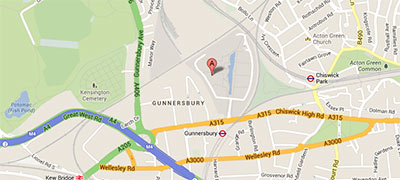The future of infrastructure
Section Menu
Pages in this section

About:
TREDIC Global Property Development
TREDIC Development:
TREDIC Investment:
Deal Making & Structuring
Professional Services:
Active Global Markets
TREDIC Global Property Development
Joint Ventures & Partnerships:
Infrastructure:
Contact TREDIC:
Location:
TREDIC Corporation
Tel: +44 (0) 203 997 7945
TREDIC Head Office:
Building 3, Chiswick Park,
566 Chiswick High Road,
Chiswick,
London,
W4 5YA,
United Kingdom.
‣ Careers

‣ Location Map: TREDIC London Headquaters
Historically, infrastructure has been built in response to a specific problem, for example, tackling localised issues such as sanitation, flooding or fire or the need to travel from A to B. In most cases, little thought has been given to future conditions or needs, a situation which has been exacerbated by short-term political cycles. This has meant that infrastructure has quickly reached capacity and become unfit for purpose.
Future infrastructure will need to be better planned and coordinated and will need to rely on improved modelling of future demand and long-term weather and environmental changes. Society will come more and more to demand intelligent infrastructure which makes the most of energy generation and distribution, makes buildings smarter and keeps traffic flowing. We believe that this is likely to improve with increased usage of smart systems using feedback data loops which provide evidence for informed decision-making and better data on which to base projections.
The worlds of technology and infrastructure are merging at a faster rate than any point in our history and the next decade will see more technological advancement and integration than in the hundred years beforehand. Capital projects & infrastructure will no longer be seen as predictable, engineering-driven and labour-intensive but rather at the cutting-edge of technology. A wide array of disruptive, breakthrough technologies are rapidly transforming the way infrastructure is built and operated, reshaping the way the infrastructure industry operates, and bringing major implications for every participant in the value chain.
TREDIC and our key industry partners are heavily funded and are at the forefront of global research and development into these new technologies and we bring this technical expertise to our partners and clients in both core and non-core infrastructure. We have come to the conclusion that there are some unique principles and technologies common to all sectors that need to be actively embraced and applied to all future infrastructure planning:
These are:
Interoperability - the ability of different information technology systems and software applications to communicate, exchange data, and use the information that has been exchanged.
The “Internet of things” - The IoT is a fast-expanding network of digitally-connected objects — devices, vehicles and more — embedded with sensors and intelligent computing capabilities, while the Industrial IoT (IIoT) is a subset used in the manufacturing and industrial sectors. Closely linked with the rise of smart cities and grids, both the IoT and IIoT open the way to a future where a vast array of sensor data and analytics-driven intelligence is available seamlessly in real time, creating many impacts for the infrastructure sector. These range from the rapid build-out of high-speed national communications infrastructure systems to underpin the IoT, to the need for buildings and transport hubs to be designed from ground-up to exploit IoT connectivity, intelligence and insight. The IoT also presents major opportunities during infrastructure construction, including remote real-time monitoring and control of equipment through embedded sensors, faster and smarter business intelligence for decision-making, real-time tracking of the location and safety of employees and contractors, and delivering context-specific information to workers on-site through augmented reality.
Use of drones - the growing use of drone technology across the world in activities such as supervising ongoing capital investment programmes, monitoring the progress of projects, managing maintenance of existing infrastructure (often combined with 3D printing), handling tasks in hazardous areas and conducting asset inventories.
Climate resilience - the capacity for a socio-ecological system to: (1) absorb stresses and maintain function in the face of external stresses imposed upon it by climate change and (2) adapt, reorganize, and evolve into more desirable configurations that improve the sustainability of the system, leaving it better prepared for future climate change impacts.
3D Printing - is now used by the majority of industrial manufacturers in developed markets and its application in infrastructure is increasing apace, with uses ranging from the construction of 3D-printed buildings i to the printing of replacement parts on-site to maintain power infrastructure more quickly and efficiently. 3D printing could potentially save significant costs in bringing construction projects to market through shorter project times and fewer wasted resources and the technology also promises dramatic reductions in shipping costs, bringing big implications for ports and transportation infrastructure. With reduced waste during construction and the ability to melt down and recycle infrastructure, 3D-printing is ultimately set to transform how cities worldwide are planned, built and sustained.
Digitisation - The conversion of data into digital form that can be processed by a computer. Digitization is of crucial importance to data processing, storage and transmission, because it “allows information of all kinds in all formats to be carried with the same efficiency and also intermingled”. Unlike analog data, which typically suffers some loss of quality each time it is copied or transmitted, digital data can, in theory, be propagated indefinitely with absolutely no degradation. This is why it is a favored way of preserving information for infrastructure projects around the world.
Smart tech - Smart technologies that combine digital connectivity with intelligent processing are already starting to revolutionise the way societies across the world design, create and use infrastructure. Smart cities and grids are taking a pivotal role in a vast array of infrastructure-related activities, ranging from managing carbon impacts to controlling devices and facilities in homes and business premises.
Smart-maintenance - Used to reduce replacement costs, delays and provide environmentally friendly maintenance solutions for ageing infrastructure networks. This will be achieved through the development of state of the art methods to analyse and monitor the existing infrastructure and make realistic scientific assessments of safety. These engineering assessments of current state will be used to design remediation strategies to prolong the life of existing infrastructure in a cost-effective manner with minimal environmental impact.
Autonomous cars - Have the potential to transform mobility, bringing huge implications for how we plan our cities and design infrastructure ranging from airports to roads. With shared-car services helping people get accustomed to buying mobility as-a-service, many autonomous vehicles will be dedicated to specific routes while some will show up at people’s door to carry them on vacation, and others will be used by commuters to replace public mass-transit systems. Alongside greater convenience, driverless vehicles offer the twin benefits of freeing up people’s time and attention on the move, and being able to travel closer together, thus using roads more efficiently. In the coming years, as challenges like liability issues and unclear legal and regulatory frameworks are addressed, we expect global autonomous vehicle revenues to surge with fully autonomous long-range driving at highway speeds arriving within the next decade. Importantly, mobility in cities will need to be cross-modal, creating a need to integrate the infrastructure for autonomous cars with facilities for walking, cycling and public transport.
Infrastructure 3.0: connecting systems - Bringing the pieces of the puzzle together Infrastructure 3.0 brings all parts of the infrastructure puzzle together and incorporates them into a single interdependent and reliable whole. Infrastructure 3.0 provides real-time optimization and incident handling across all domains. It allows us to adapt to the pressures of rapid urbanization, climate change, and other trends by utilizing advances in sensors, controls, and software to predict outcomes, take actions, and manage systems more effectively. For example, in an Infrastructure 3.0 world, smart buildings and the Smart grid cooperate seamlessly to optimize energy consumption. Smart buildings take on surplus energy when it is cheap and plentiful, storing it for later and feeding it back to the grid when demand is high. Traffic systems become more user-friendly, integrating all transport modes and operators so that travellers can optimally plan their journeys using real-time information – which reduces both congestion and emissions. And command and control centres are capable of integrating transport, water, gas, and electricity networks to exercise pre-emptive actions or respond swiftly in a crisis.
Stages of infrastructure development:
Regardless of where technology is taking us in immediate future, there is once certainty, and that is infrastructure has a bright future with plenty of capital available for the right projects that are structured efficiently to be commercially viable. With Trillions of USD committed to Global infrastructure over the next decade from Governments, Infrastructure Funds, Sovereign Wealth funds, Multi-lateral banks and Institutional Pension and Insurance funds, TREDIC is amongst the best placed of organizations globally to partner with, and meet your infrastructure needs.
TREDIC Corporation
Tel: +44 (0) 203 997 7945 Email: info@trediccorporation.com
Registered Address: TREDIC, Building 3, Chiswick Park, 566 Chiswick High Road,
Chiswick, London W4 5YA, United Kingdom.
Registered in England and Wales No. 07617700.
Social Links
© Copyright 2016 TREDIC Corporation. All rights reserved

